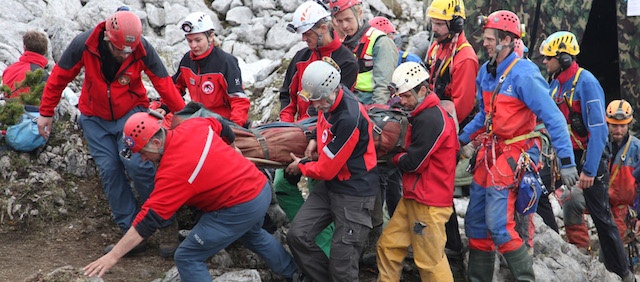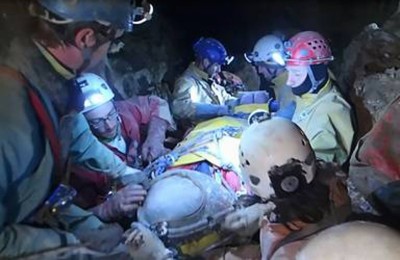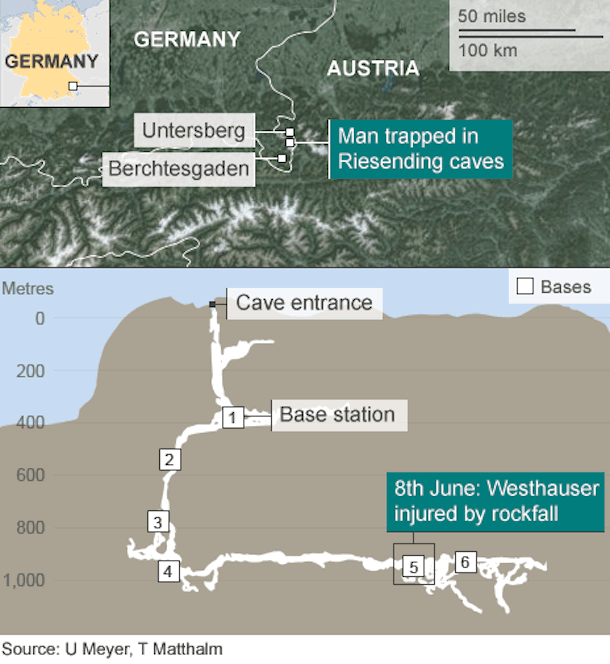L’incredibile salvataggio di Johann Westhauser
Uno speleologo tedesco è stato tirato fuori vivo – dopo 12 giorni – dalla grotta più profonda di Germania, mille metri sotto terra

altre
foto
Giovedì in Germania, nelle Alpi vicine al confine con l’Austria, un gruppo di soccorritori è riuscito a salvare uno speleologo tedesco di 52 anni, Johann Westhauser, che era rimasto intrappolato da 12 giorni in una grotta a mille metri sottoterra. Westhauser si trovava lì dall’8 giugno, quando una massiccia caduta di massi aveva bloccato l’uscita della grotta e costretto i soccorritori a lunghe e complesse operazioni di salvataggio. I due medici che l’hanno soccorso hanno detto che Westhauser è rimasto ferito piuttosto gravemente: nonostante fosse cosciente, gli sono state riscontrate delle ferite serie alla testa e all’addome. Westhauser è stato poi trasportato in ospedale in elicottero.
Il capo della squadra che ha guidato i soccorsi, Klemens Reindl, ha detto che le operazioni per salvare Westhauser hanno coinvolto 728 persone provenienti da cinque paesi diversi, tra cui un team italiano composto da 109 tecnici. Reindl ha detto: «È stata una delle più difficili operazioni di soccorso di questo tipo mai riuscite». La difficoltà stava soprattutto nel fatto che Westhauser fosse rimasto bloccato a una profondità notevole. Inoltre i passaggi e cunicoli della grotta, hanno spiegato i soccorritori, erano molto stretti e hanno creato parecchie difficoltà a coloro che sono scesi per cercare di salvare Westhauser.
Westhauser era uno degli esploratori che nel 1995 scoprirono l’esistenza della grotta, riconosciuta poi come la più profonda della Germania. Westhauser lavora all’Institute for Applied Physics al Karlsuhe Institute of Technology, una delle più prestigiose università tedesche: non è ancora chiaro se sia andato alla grotta per qualche ricerca legata al suo lavoro o per interesse suo personale.











